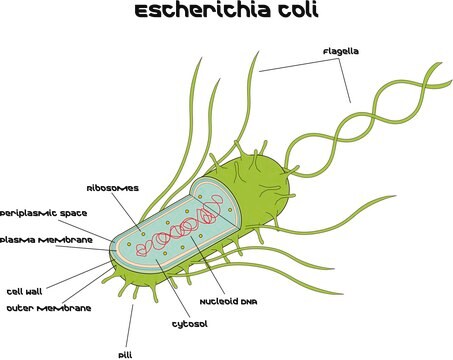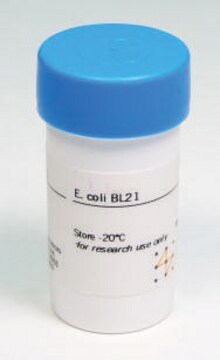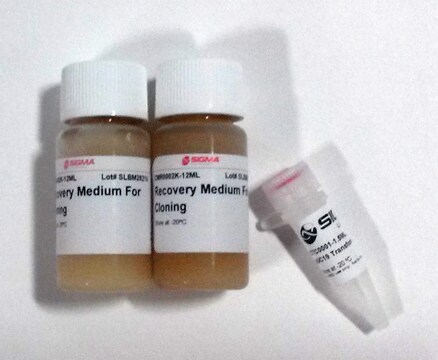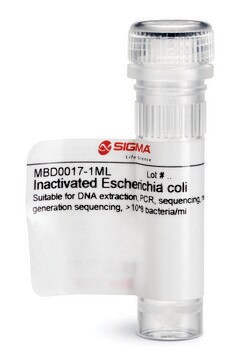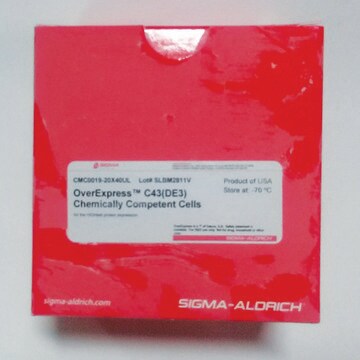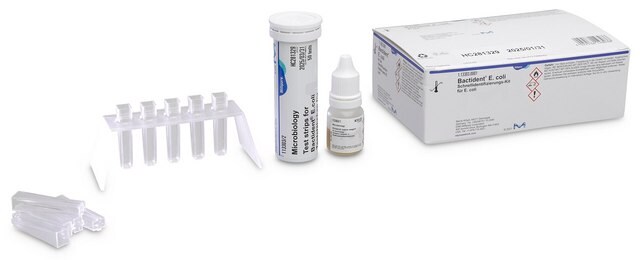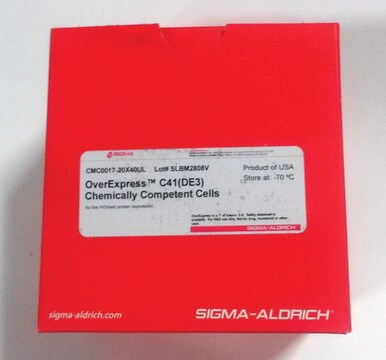EC1
Escherichia coli
Strain K12, lyophilized cells
Synonym(e):
E. coli K-12
Anmeldenzur Ansicht organisationsspezifischer und vertraglich vereinbarter Preise
Alle Fotos(1)
About This Item
Empfohlene Produkte
Qualitätsniveau
Sterilität
non-sterile (not processed or packaged aseptically)
Form
lyophilized cells
Eignung
not intended for starter culture
Lagertemp.
−20°C
Suchen Sie nach ähnlichen Produkten? Aufrufen Leitfaden zum Produktvergleich
Allgemeine Beschreibung
Escherichia coli (E.coli) is a non-spore forming, Gram-negative, rod-shaped facultative anerobe, which is found in the human gastrointestinal tract. It belongs to the family of Enterobacteriaceae. E.coli is chemoorganotrophic and grows at 37°C. Pathogenic E.coli strains is associated with diarrhea, septicemia, meningitis and urinary tract infections. It inhibits the colonization of the gut by harmful bacteria. E.coli acts as an indicator of fecal contamination.
Sonstige Hinweise
A mutant which is rich in alkaline phosphatase.
Lagerklassenschlüssel
11 - Combustible Solids
WGK
WGK 3
Flammpunkt (°F)
Not applicable
Flammpunkt (°C)
Not applicable
Persönliche Schutzausrüstung
Eyeshields, Gloves, type N95 (US)
Hier finden Sie alle aktuellen Versionen:
Besitzen Sie dieses Produkt bereits?
In der Dokumentenbibliothek finden Sie die Dokumentation zu den Produkten, die Sie kürzlich erworben haben.
Foodborne Pathogens: Microbiology and Molecular Biology (2005)
Pablo Gallay et al.
Biosensors & bioelectronics, 148, 111764-111764 (2019-11-11)
We are reporting an original supramolecular architecture based on a rationally designed new nanohybrid with enhanced peroxidase-like activity and site-specific biorecognition properties using avidin-functionalized multi-walled carbon nanotubes (MWCNTs-Av) and Ru nanoparticles (RuNPs). The nanohybrid-electrochemical interface was obtained by drop-coating of
Multiple antibiotic resistance indexing of Escherichia coli to identify high-risk sources of fecal contamination of foods.
Krumperman PH, et al.
Applied and Environmental Microbiology, 46(1), 165-170 (1983)
Min-Hui Zhao et al.
Biosensors & bioelectronics, 150, 111865-111865 (2019-11-20)
We develop a low-background electrochemical biosensor for one-step detection of uracil DNA glycosylase (UDG) based on the host-guest interaction and iron-embedded nitrogen-rich carbon nanotube (Fe-N-C) that mimics enzyme-mediated electrocatalysis to achieve signal amplification. In this work, Fe-N-C is initially immobilized
Tássia Silva Tavares et al.
Molecules (Basel, Switzerland), 25(2) (2020-01-16)
Owing to their high surface area, stability, and functional groups on the surface, iron oxide hydroxide nanoparticles have attracted attention as enzymatic support. In this work, a chemometric approach was performed, aiming at the optimization of the horseradish peroxidase (HRP)
Unser Team von Wissenschaftlern verfügt über Erfahrung in allen Forschungsbereichen einschließlich Life Science, Materialwissenschaften, chemischer Synthese, Chromatographie, Analytik und vielen mehr..
Setzen Sie sich mit dem technischen Dienst in Verbindung.